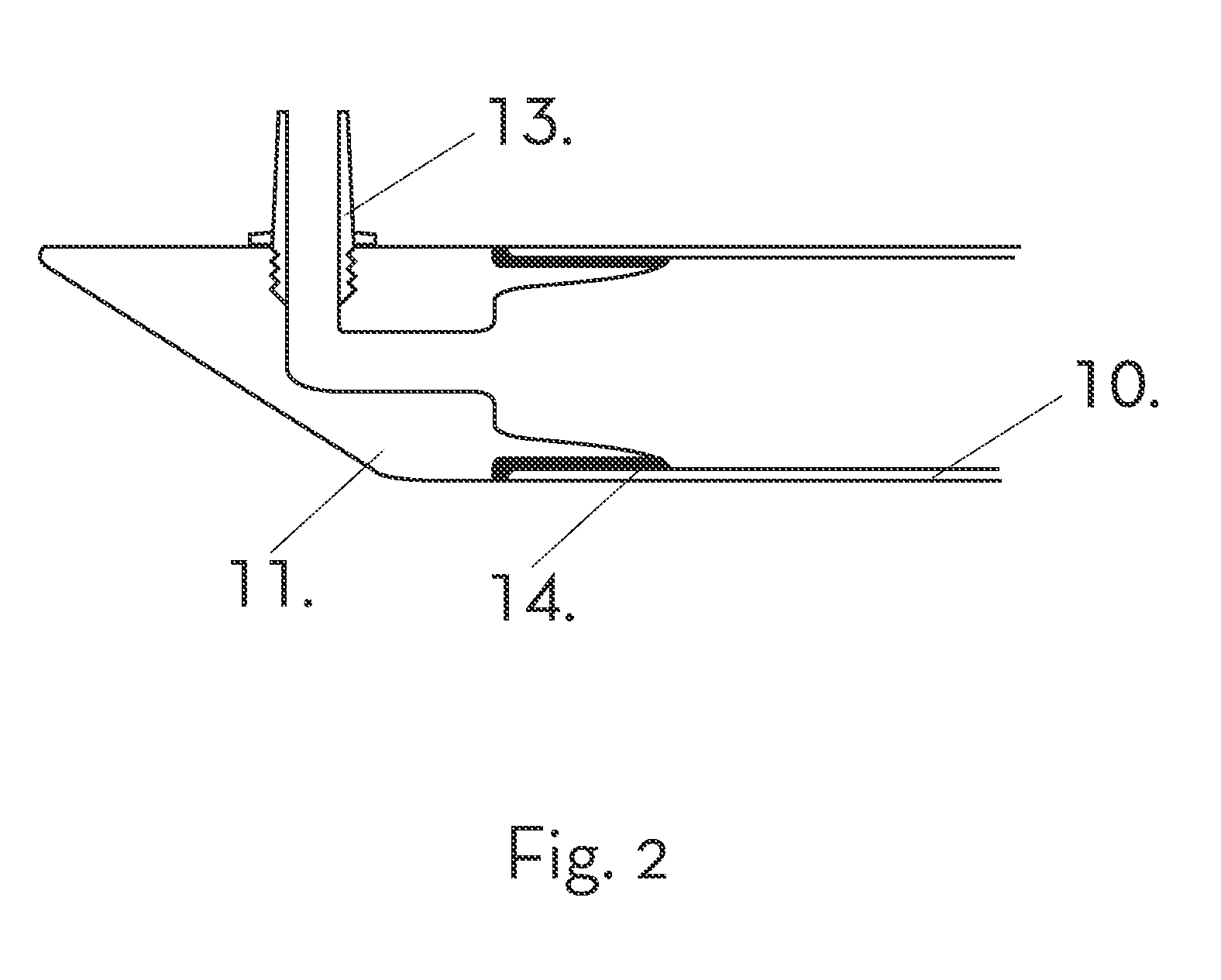Thermoplastic mandrels for composite fabrication
a technology of thermoplastic mandrels and composite fabrication, which is applied in the direction of process and machine control, instruments, mechanical control devices, etc., can solve the problems of metal mandrels damaging the finished part, changing expansion properties, and complications in reaching a level
- Summary
- Abstract
- Description
- Claims
- Application Information
AI Technical Summary
Benefits of technology
Problems solved by technology
Method used
Image
Examples
Embodiment Construction
[0020]The new method utilizes a thermoplastic extrusion for the body of the mandrel. This method enables a seamless mandrel in any constant section, of any length. The mandrels can be monolayer or multilayer. For most applications the strength, vacuum integrity and release characteristics of one layer of thermoplastic material is sufficient, and polymethylpentene blends can be used as the thermoplastic material. However, in certain applications other polymers may be used, in monolayer and / or multilayer combinations. If needed, multilayer extrusions may provide added strength, vacuum integrity, chemical resistance and release characteristics. As the mandrels are extruded rather than molded, there are no constraints due to the length of the mold, oven size or press limitations. For example, oven sizes or press limitation may not be able to create panels of up to 18 meters long. However, the extruded mandrels are not limited in size and can be up to and greater than 18 meters long. The...
PUM
| Property | Measurement | Unit |
|---|---|---|
| surface tension | aaaaa | aaaaa |
| temperature | aaaaa | aaaaa |
| sizes | aaaaa | aaaaa |
Abstract
Description
Claims
Application Information
 Login to View More
Login to View More - R&D
- Intellectual Property
- Life Sciences
- Materials
- Tech Scout
- Unparalleled Data Quality
- Higher Quality Content
- 60% Fewer Hallucinations
Browse by: Latest US Patents, China's latest patents, Technical Efficacy Thesaurus, Application Domain, Technology Topic, Popular Technical Reports.
© 2025 PatSnap. All rights reserved.Legal|Privacy policy|Modern Slavery Act Transparency Statement|Sitemap|About US| Contact US: help@patsnap.com



